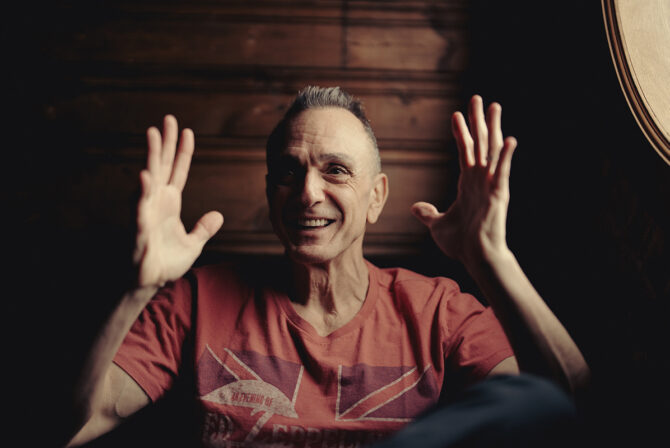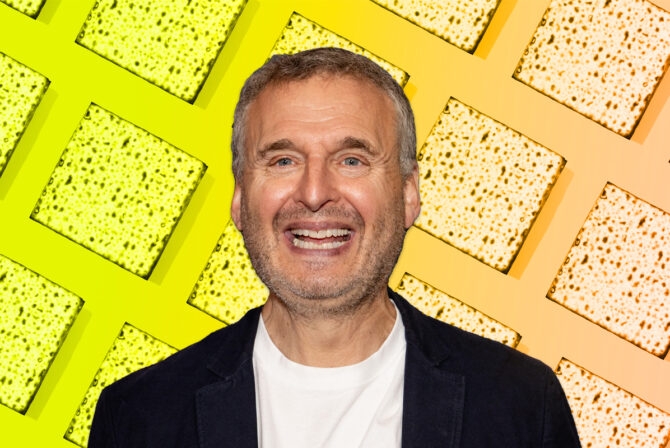Growing up in the 1970s and early ’80s in suburban Long Island, I celebrated Halloween just like all the other kids in the neighborhood. My parents, first-generation Americans and the children of Eastern European Jews, viewed Halloween as just another brick in the American home they were building—no different from Thanksgiving or the 4th of July.
We dressed up as witches or vampires, looking decidedly more adorable than frightening, we went door-to-door chaperoned by our parents or older siblings, we remembered to say thank you when we received our candy. My father carefully carved a jack-0-lantern with jagged teeth and arched eyebrows, and he cleverly fit a candle inside to make it glow.
In high school, when I outgrew trick or treating, I transitioned to costume parties in whomever’s house was the least supervised. Dressed up as someone else, you could reinvent yourself for an evening.
As I recall, there was very little about the holiday back then that even approached frightening. The worst that happened in my neighborhood was that some eggs were thrown at a parked car. The only scary thing I remember clearly is when we transitioned to giving out only wrapped candy, because somewhere in the country, someone evil had apparently handed out a home baked treat or an apple with a razor blade inside.
Now as an adult in a similar kind of suburb, Halloween has lost much of its charm for me. Some of this is visceral. I didn’t become a doctor, because I don’t like blood. I don’t watch horror movies. The thrill of being scared is lost on me. It goes deeper than that, too.
When my family became Jewishly observant, Halloween, a holiday with pagan roots, had no place in our game plan. I don’t make judgments; certainly there are Jews of all stripes who dress up and trick or treat. But my children didn’t feel that pressure. They attended Jewish schools, and none of their friends “did” Halloween.
But I think Halloween itself has changed even more than I have. The holiday has gone from campy to downright creepy. The costumes have devolved from cute and creative to all-out sexual and violent. When I walk around my neighborhood, I still smile at the six-foot hairy spiders affixed to the houses and the pumpkins on the stoops.
But what I find truly unbearable and incomprehensible are the front yards turned into faux graveyards, complete with realistic looking headstones engraved with names I choose not to read. Why would parents of small children want to make their front lawn—a place of ball games and lemonade stands—into a cemetery?
I admit that my views on Halloween are curmudgeonly. I can’t help it. Judaism has numerous laws and customs meant to preserve the dignity of the dead, while taking care not to glorify death. Traditionally, when a Jewish person dies, someone watches over the body until the funeral and the person is buried within 24 hours, out of respect for both the body and the soul. Jews who are descended from the ancient priests are not supposed to enter a cemetery, except to bury their immediate family members.
When we first moved into our neighborhood some 20 years ago, I adopted a compromise on Halloween that seemed to work—and still does. I buy a whole lot of (kosher) candy, and place it in a large bowl outside the front door underneath a sign that reads, “Please do not ring bell, but take candy and enjoy!” I check the bowl periodically and refill, until the revelers are gone or my candy runs out. This allows me to be a good neighbor and not a grouch, without having to interact directly with something that I no longer find speaks to me.
Several years ago, my mother passed away. Her yahrzeit (the Hebrew anniversary of her death) fluctuates each year, governed by the phases of the moon that dictate the Jewish calendar. But on the secular calendar, she died on Friday, October 29. Because Jews do not bury on the Sabbath, we waited until Sunday for the funeral. Sunday, October 31.
In the week leading up to my mother’s death, we were in the hospital round the clock, and I didn’t once think about Halloween; I somehow missed even the onset of fall, shocked when we emerged that the leaves had changed color. Only as we returned from the cemetery to begin sitting shiva in the late afternoon of October 31, did I notice the decorations and the costumed children out on the streets.
That year, I looked upon it all a bit more nostalgically, remembering the innocence of Halloween back at my parents’ home. But I still couldn’t escape the feeling that there was something disturbing about returning from the dignified burial of my mother to such a celebration of death, even one meant in good fun. That year we put up a sign that said simply, “please do not ring bell.” We didn’t bother with the candy.







